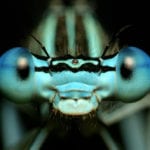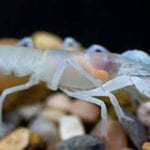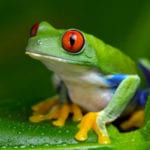 Weird Stuff
Weird Stuff  Weird Stuff
Weird Stuff  Our World
Our World 10 Ways Your Christmas Tree Is More Lit Than You Think
 Movies and TV
Movies and TV The 10 Coolest Stars to Set Sail on The Love Boat
 History
History 10 Things You Didn’t Know About the American National Anthem
 Technology
Technology Top 10 Everyday Tech Buzzwords That Hide a Darker Past
 Humans
Humans 10 Everyday Human Behaviors That Are Actually Survival Instincts
 Animals
Animals 10 Animals That Humiliated and Harmed Historical Leaders
 History
History 10 Most Influential Protests in Modern History
 Creepy
Creepy 10 More Representations of Death from Myth, Legend, and Folktale
 Technology
Technology 10 Scientific Breakthroughs of 2025 That’ll Change Everything
 Weird Stuff
Weird Stuff Ten Bizarre Facts About The Doge Meme
 Our World
Our World 10 Ways Your Christmas Tree Is More Lit Than You Think
 Movies and TV
Movies and TV The 10 Coolest Stars to Set Sail on The Love Boat
Who's Behind Listverse?

Jamie Frater
Head Editor
Jamie founded Listverse due to an insatiable desire to share fascinating, obscure, and bizarre facts. He has been a guest speaker on numerous national radio and television stations and is a five time published author.
More About Us History
History 10 Things You Didn’t Know About the American National Anthem
 Technology
Technology Top 10 Everyday Tech Buzzwords That Hide a Darker Past
 Humans
Humans 10 Everyday Human Behaviors That Are Actually Survival Instincts
 Animals
Animals 10 Animals That Humiliated and Harmed Historical Leaders
 History
History 10 Most Influential Protests in Modern History
 Creepy
Creepy 10 More Representations of Death from Myth, Legend, and Folktale
 Technology
Technology 10 Scientific Breakthroughs of 2025 That’ll Change Everything
10 Strange Ways Insects Have Evolved To Survive
Insects are fascinating creatures. While they’re considered creepy or unsettling by some, they’re among the most diverse and interesting animals, often armed with a wide variety of defence mechanisms, survival tactics, and highly unique appearances.
Most of us are used to house flies and wasps, perhaps the widely recognisable ladybug beetle, but few are aware of just how distinct and strange insects can be. Evolved in incredible ways to ward off predators, source nourishment, and efficiently reproduce, there are myriads of examples we can look at. We’ll be examining ten of these wild adaptations today.
10 Incredible Firsts In The Evolution Of Life On Earth
10 Defensive Odour—Stink Bugs
Starting off with a unique defensive mechanism that many of us may have already observed in some animals; releasing a horrible odour when threatened. Stink bugs are a widely disliked insect, having gained an extremely negative reputation largely attributed to the facts that they’re very common and attempting taking one outside will most likely result in one’s room smelling awful.
Not a unique mechanism, as strange as it is, skunks infamously resort to a similar defence and some other insects have such a mechanism as well. Even so, stink bugs remain a mainstay in our collective experiences, given the fact that there are thousands of species worldwide. Given these facts and that many of the most widespread species are invasive, their defence clearly works fabulously. So fabulously, in fact, that a group of scientists have been working for years on introducing a wasp species that would get rid of the invasive stink bugs supposedly without harming the native wildlife. This group felt extremely lucky when said wasp showed up in the area naturally without any introduction efforts, though the results are unknown.
9 Sexual Cannibalism—Praying Mantis
Another infamous behaviour, the female praying mantis, just like the equally infamous female black widow, will frequently eat their mate after it’s done their job in the reproduction cycle. While it certainly seems cruel and unacceptable to us—and it certainly would be as humans or arguably at any scale—it is an effective survival tactic for these insects and not one done as an act of cruelty.
In studies, roughly half of the males survived mating, though in nature it’s estimated that only between 13 and 28 percent of them actually get eaten. The female half who ate their partners in the study, however, didn’t just get a certainly extremely useful meal to sustain themselves while laying eggs, but also laid a significantly higher amount of eggs to begin with.
In addition to this, it was shown that a large portion of the nutrition gained from eating the male actually went to the offspring rather than the mother. It certainly seems cruel, and it’s certainly a fortunate thing that humans aren’t a species that rely on this behaviour. It may be horrible, but it is an efficient act of survival.
8 Defensive Vomit—Pine Sawfly Larvae
Back to defence mechanisms with one that’s certainly unique, at the very least. Simply and quite grossly put, the larvae of the pine sawfly band together in groups and vomit at their predators to fend them off. If that wasn’t strange enough, apparently some of them don’t even do it but still get the benefits! They gain protection from the group but refuse to actually contribute at all, living as freeloaders.
Males are apparently more likely to avoid contributing than females, growing faster as a result without having to actually work. Some larvae, however, simply stop vomiting because they’ve done it so much. This tactic, while effective, takes a lot out of the insect, weakening them and lowering their chance of survival.
To make things worse, pine sawfly larvae are widely considered a pest. They consume pine needles, heavily damaging the trees in the process.
7 Pit Viper Caterpillar—Hawk Moth
Caterpillars don’t seem too unusual. Most of us learn about them in school, we’re aware that some are venomous to touch, but not many of us think about these larval forms. Colourful and interesting by themselves, caterpillars deserve probably more recognition than they currently have. This is especially true for the hawk moth’s curious looking larva.
The fascinating ability that truly makes these caterpillars stand out from the rest is the fact that they mimic snakes! They can be a variety of colours from brown to green and, when threatened, they’re able to puff up, taking on the shape and overall look of a snake’s head, which many have likened to an extremely dangerous pit viper. While the caterpillar is actually harmless, the disguise is so convincing that it’s an effective survival tactic by itself, able to fool any predatory birds and even humans that may cross paths with this fearsome ‘snake’.
6 Washing Children With Poison—Ants
Everyone’s aware of the hardworking ant, eusocial, part of incredible colonies, cleaning their young using poison—apparently. Behaviour that could be considered personal hygiene is common among insects, though some ordinary ants do a lot in the name of cleanliness. It is, after all, paramount for ants to avoid a disease outbreak, a single one quite possibly wiping an entire nest out.
With this in mind, their solution seems to be the unique technique of sucking poison from their backsides out of their acidopore, and simply drooling it over their young to destroy potentially harmful fungi infecting them, thus preventing it from spreading. Apparently, some opted to simply spray the poison but most felt that licking up their own poison directly from the acidopore and releasing that was a better option. The good news in all of this is that this appears to work wonders; even the fungi that aren’t destroyed are far less likely to spread. Nature is truly amazing, even when it’s a tad unappealing.
5 Glowing Cockroach—Lucihormetica luckae
Cockroaches are a pest, yet also deeply misunderstood. Out of the 4,600 species scientists have discovered so far, only a few actually act as pests, occupying human households. The vast majority do no such thing and simply live in forests. That being said, it’s entirely understandable that people have major problems with the ones that do infest our habitats—they are simply horrible. Even then, we can feel lucky knowing that we perhaps got a better deal than we could’ve. The cockroaches we mostly encounter don’t actually do much besides being a hygiene and potential health hazard, many other species are far more exciting, or perhaps unsettling.
Lucihormetica luckae is, simply put, a cockroach that glows green in the dark, only leaving a dark spot that creepily resembles a face, perhaps a skull. While a glowing cockroach seems easier to kill, and it certainly would be for us, it also seems to be an effect of mimicry. Scientists believe that this strange species mimics the bioluminescent click beetle, a poisonous insect. Yet again, the strangeness seems to work, even if it may seem odd or redundant at first.
4 Sweet ‘Vomit’—Bees
The statement ‘honey is bee vomit’ has become a bit of a viral saying largely in the past decade or so. Whether that’s true depends on one’s definition of vomit—honey does not come from a bee’s stomach but rather a separate ‘honey stomach’. The delicious substance is, however, regurgitated nonetheless.
While we’ve grown accustomed to honey as a staple food item, the reason bees make honey to begin with has fallen by the wayside a little. The sweet, regurgitated substance is, like virtually all things in the animal kingdom, simply for survival. Honey keeps pretty much indefinitely as it’s an unsuitable environment for bacteria. Bees take advantage of this even more than we do. In the cold winter months when flowers are unavailable, bees use their stored honey as a long-lasting food source. Whether it’s ‘bee vomit’ or ‘bee spit’ or not, honeybees and humans alike have found it delicious and deeply useful for a long, long time, and will continue to do so indefinitely.
3 Scorpion Tail Genitals—Scorpion Fly
Seeing a flying insect with a scorpion tail would likely be a scary experience for anyone uninitiated with the aptly named scorpion fly. For those who are aware of this insect, however, the fear just turns into bewilderment and perhaps repulsion. What looks like a clear scorpion tail with a stinger on the end isn’t quite what it seems.
This strange appendage is, interestingly, only present on male scorpion flies. Yes, the ‘scorpion tail’ is in fact a mating display, and, as the male’s claspers, acts similarly to the respective genitalia in other species. Aside from their deeply odd biology, mating for scorpion flies seems to involve the frequent giving of gifts to the female in the form of dead insects scavenged from the ground or spiders’ webs, or, alternatively, simply a decent amount of saliva.
2 Hummingbird Insect—Hummingbird Moth
You may assume hummingbird moths simply mimic hummingbirds. Sure, that would be quite interesting, perhaps visually pleasing, but not exceedingly special. Thankfully, these insects go many steps further. They, incredibly, don’t just have the ability to hover like hummingbirds and even share some visual features with these unrelated birds, they feed and live much the same way as well.
A brilliant and fascinating example of convergent evolution, these unfortunately short-lived moths are relatively rare, and do unfortunately die in the span of months or even weeks. This isn’t a product of this lifestyle, however, just an unfortunate side effect of being a moth. If these animals weren’t wonderful enough already, though, the fact that they’re decently efficient pollinators also adds to their incredible charm. Several species can be found in North America and many others in the Old World, so, if one’s able to see one, it’ll be an experience definitely worth remembering.
1 Exploding—Bombardier Beetle
Finishing off the list not with hummingbird moths’ wonderful charms but something significantly more extreme, bombardier beetles are capable of the impressive survival feat of.. exploding. While they’re small and only live weeks, hopefully not due to this daring technique, they’re truly incredible insects. Armed with the ability to release a burning-hot, foul smelling liquid to kill other insects and drive off small and large predators alike, the bombardier beetle isn’t an animal worth messing with.
This amazing mechanism can send them flying, save their life when swallowed by forcing a predator to spit the insect out, and more. The liquid is powerful enough to incapacitate many animals and cause a nasty burn even on human skin, releasing from the beetle’s body at a boiling 100°C. Bombardier beetles have famously—or infamously—been used as an argument against evolution, but scientists maintain that the beetles evolved incrementally, which is certainly where the evidence points, a fact that only makes these small creatures even more impressive.
10 People Killed By Animals You Wouldn’t Expect
About The Author: Just a curious person with a passion for all things science, history, mysteries, the paranormal, animals, and strange cultural phenomena!








